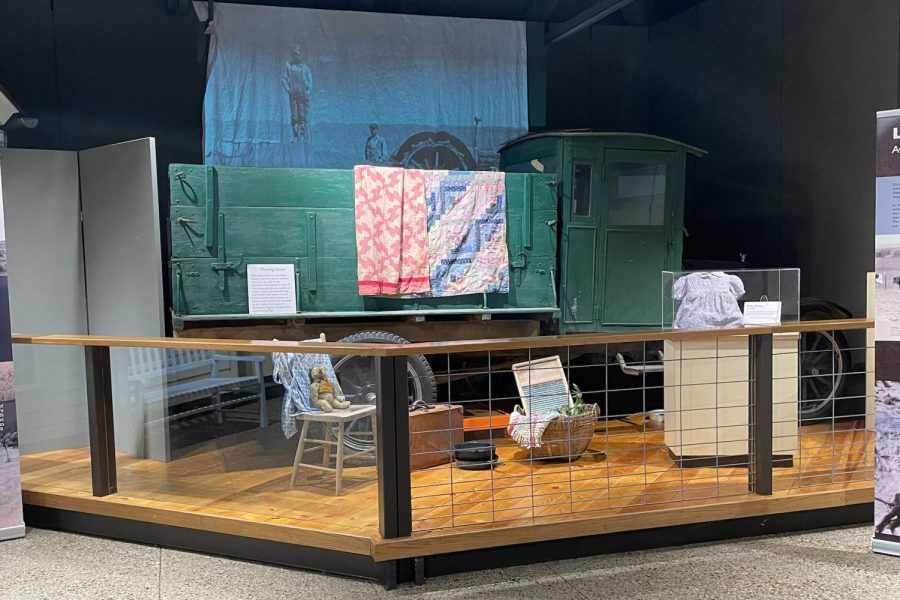Museum exhibit details life during the Dust Bowl
The display titled “Moving Items” shows the typical things families would carry with them as they moved.
March 7, 2023
A new exhibit called “Drowning in Dirt: Joseph Hutton and the Dust Bowl” officially opened in the South Dakota Agricultural Heritage Museum to the public Feb. 27. The museum will house the exhibit until August 2024.
The exhibit features many different aspects of the dust bowl from the eyes of Joseph Hutton who was a soil scientist and taught at SDSU from 1911 to 1939. Stories from other families during the dust bowl are also on display.
Dale Potts, an associate professor of history in the School of American and Global Studies, spoke at the grand opening event March 6.
“All of the elements come together in ‘Drowning in Dirt: Joseph Hutton and the Dust Bowl’ to tell a story of the early days of soil science and the promotion of knowledge about soil health,” Potts said. “It is a history of Joseph Hutton, an individual who cared deeply about soil health, how soils were used and how Hutton strove to assist farmers in protecting their crops and keeping their soils in place.”
The exhibit also includes interactive aspects in an effort to appeal toward younger audiences despite the Dust Bowl happening almost 100 years ago.
“Joseph Hutton was a scientist, a photographer and a writer. He was passionate about sustainability of the soil so that farmland would always be able to provide food,” Gwen McCausland, director of the South Dakota Agricultural Heritage Museum, said. “This is through the eyes of a soil scientist he was promoting and predicting the destruction of the soil and the issues going to happen a decade before the 30s.”
The exhibit features a historical house covered in dust, an interactive house that tells different stories, a truck that shows how families migrated, a prototype of a way to get rid of locusts and many different pictures with stories from different families.
There are also photos and objects that allow people to see what it looked like to have everything covered in dust including food.
The truck in the exhibit tells the stories of different families that moved to different parts of the country due to the loss of their crops.
“I liked the house that is covered in dust, because it is how the houses looked during the dust bowl,” Grady Erickson, a sophomore agronomy major, said.
All of the displays for the exhibit were donated and the collection was completed in 2016 when Hutton’s family donated the rest of his belongings to the museum including photographs and research notes.
“It is very important to illustrate South Dakota State University’s long-standing history for innovative work in agriculture and related fields,” Potts said.
The bulk of Hutton’s research on soil conservation is still being promoted today and helps more people learn about soil conservation.
“Drowning in Dirt: Joseph Hutton and the Dust Bowl” is funded in part by a grant from the South Dakota Humanities Council, an affiliate of the National Endowment for the Humanities and by the Friends of the Museum membership fund.


















